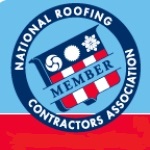Long Island Roofing: Article About Attic Ventilation
Decorative vents seen on opposite sides of a home. They come in many different styles to allow air to enter the attic on one side and exit on the other end. These are highly effective unless the wind direction is not allowing regular airflow.
Question answered by an experienced Long Island roofers: If I notice an ice dam forming, what is the best way to get rid of it?The safest way to remove an ice dam is to use a special roof rake to pull snow and ice from the roof. Calcium chloride melts ice, but it requires getting on a ladder to cover the ice. A professional removal is another option if you are unsure of taking on the job alone.

It is not uncommon for homeowners to ignore the temperatures in their attic, especially if they don't go inside often. Hot air can build up from the sun during the summer months, and the same can happen in the winter from running a furnace. The reason this happens is a lack of ventilation circulating air through the area. A warm attic spells disaster for Long Island roofing conditions as ice dams are given the perfect opportunity to form. Heat from the attic melts the snow that drains down the roof and forms into solid ice at the edge. A few small home improvements make a tremendous difference in the likelihood of ice dams causing destruction to the home.
Solar heat can be damaging to some of the most common types of roofing materials, including asphalt. They are inexpensive and fairly easy to replace if they end up cracked or torn. After the hottest days of the year have passed, inspect the entire roof to ensure that it is ready for the winter to come. Ignoring a few bad shingles can expose the roof and attic to water that puddles up when ice dams form. A well-built and thoroughly maintained roof is the best prevention for damage caused by ice dams.
The roofers from Long Island Roofing can answer any question you have about GAF roofing materials or flat roofs.
To keep the attic from holding hot air that will melt snow into a puddle on the roof, install a ventilation system. Don't forget to keep the vents clean so that they are able to perform. Intake vents come in a few different options to suit every home. Older structures typically have gable vents located on each end of the home to allow air to circulate through. Unfortunately, this type of ventilation is not adequate if the roof is too steep. Ridge vents are mostly out of sight as a great option to obvious gable vents. Soffit vents are simple to install with a few basic tools and little roofing knowledge. This addition pulls fresh air into the attic, which is pushed back outside through exit ventilation. Each home is different, and it is advisable to go with a personalized solution rather than the cheapest or best looking system.
If you were lucky enough to not have an issue with ice dams in the previous year, don't take this as a guarantee that everything will be fine the next year. Water sitting on roofing material may take a couple of years to penetrate the surface and cause noticeable damage. Depending on the size of the dam, there could be a small drip or a massive roof collapse that can be dangerous to people living inside the home. Always be safe and protect your roof, attic and home interior against moisture.









